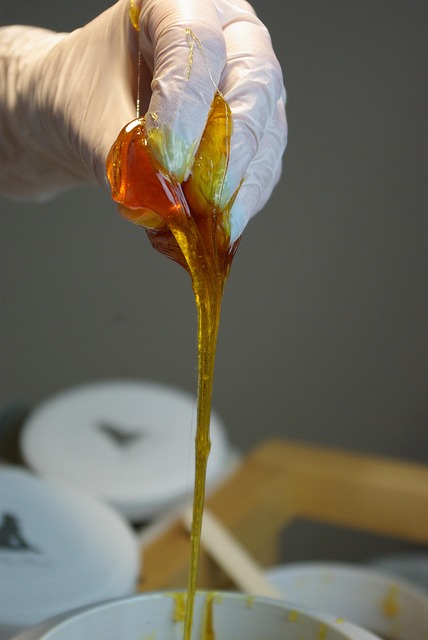Odor removal is a complex task requiring strategic methods tailored to odor types and surfaces. Advanced technologies like ozone treatment, enzymatic cleaners, and natural absorbents offer effective solutions for persistent scents from kitchens, bathrooms, and pets. Enzymes, photochemical oxidation (PCO), ionization, and carbon adsorption are powerful tools for permanent odor removal. Natural remedies provide safer options but may vary in effectiveness. Case studies highlight successful specialized treatments, while preventive measures include regular cleaning, proper ventilation, and prompt spill management to maintain a fresh environment.
Tired of persistent odors haunting your spaces? Discover the ultimate guide to Odor Removal. This comprehensive article unravels the mysteries of permanent odor elimination, offering a detailed odor removal approach. From understanding the science behind smells to exploring natural vs chemical solutions, we tackle common sources like kitchens and bathrooms. Learn from real-life case studies, master preventive tips, and choose the best odor removal techniques for a fresh, lasting environment.
Understanding Permanent Odor Removal: A Comprehensive Approach

Odor removal is a complex process, especially when targeting permanent scents. Understanding this involves recognizing that odors are molecular interactions with our senses, leaving traces on surfaces that can be challenging to eliminate. A comprehensive approach to permanent odor removal requires a multi-faceted strategy.
This includes identifying and addressing the source of the odor, using advanced technologies like ozone treatment or enzymatic cleaners, and employing natural absorbents or filters. It’s crucial to choose methods suitable for the specific odor and the material affected, ensuring safety and effectiveness. By combining these techniques, a thorough understanding of chemical interactions, and persistent efforts, permanent odor removal can be achieved, restoring environments to their fresh states.
Common Sources of Odors and Their Unique Challenges

Common sources of odors include kitchens, bathrooms, and pets, each presenting unique challenges for effective odor removal. Kitchens, with their frequent cooking activities, often battle stubborn food and grease smells that can linger in cabinets, countertops, and even walls. Bathrooms, due to high moisture levels and regular use, are prone to mold, mildew, and dampness-related odors. Pet odors can be particularly challenging as they embed themselves in carpets, upholstery, and even structural materials, making professional intervention necessary for complete removal.
Understanding these challenges is crucial when selecting odor removal methods. While some techniques may offer temporary relief, others aim for permanent solutions. For instance, enzymatic cleaners break down odor-causing molecules at a molecular level, addressing the root cause rather than merely masking smells. This approach ensures that odors don’t reoccur after cleaning. Additionally, advanced technologies like ozone generators or UV light systems can sanitize and deodorize spaces by eliminating bacteria and viruses responsible for bad odors.
Techniques and Technologies for Effective Odor Elimination

In the quest for permanent odor removal, various techniques and technologies have emerged, each promising effective elimination of persistent scents. From advanced enzymatic treatments to innovative chemical solutions, modern science offers a range of options tailored to different types of odors and surfaces. Enzymes, for instance, are increasingly used due to their natural ability to break down organic compounds responsible for malodors. These biological catalysts can efficiently target and neutralize odors in a wide array of materials, from fabrics to hard surfaces.
Beyond enzymatic treatments, technological advancements like photochemical oxidation (PCO) have revolutionized odor removal. PCO utilizes light energy, often combined with UV radiation, to produce reactive oxygen species that combat odors at a molecular level. This method is particularly effective against volatile organic compounds (VOCs), rendering it suitable for various applications, including air purification and surface deodoring. Other cutting-edge technologies, such as ionization and carbon adsorption, further enhance the arsenal of odor removal strategies, ensuring lasting solutions to even the most challenging malodors.
Natural Solutions vs Chemical Treatments: Pros and Cons

Natural solutions for odor removal have gained popularity due to their perceived safety and environmental friendliness. Pros include minimal risk of skin irritation or adverse health effects, as well as a reduced carbon footprint compared to chemical treatments. Many natural remedies use ingredients like baking soda, lemon juice, or essential oils that are readily available and cost-effective. However, their effectiveness may vary; some odors require stronger interventions, which could limit the appeal of natural methods for severe cases of odor removal.
On the other hand, chemical treatments offer powerful solutions but come with potential drawbacks. They often contain harsh chemicals that can irritate skin or cause respiratory issues if not used properly. Additionally, disposal of these chemicals may contribute to environmental pollution. Yet, when applied correctly, they can swiftly and effectively eliminate even persistent odors. The choice between natural and chemical methods depends on factors like odor severity, sensitivity, cost, and environmental considerations.
Case Studies: Success Stories in Odor Removal

In the realm of odor removal, case studies often serve as a testament to the effectiveness of various methods. One such success story involves a residential property plagued by persistent musty odors. After trying numerous over-the-counter solutions with little avail, the homeowners sought professional help. A specialized team conducted thorough inspections and identified the source as mold growth in the basement. Through advanced remediation techniques, including air purification and anti-microbial treatments, the odor was successfully eliminated, and the property was restored to its fresh state.
Another notable example is a commercial kitchen that faced challenges with food odors. Regular cleaning routines weren’t sufficient. A specialized odor removal service intervened by implementing a multi-step process: ventilation system cleaning, surface decontaminating, and the use of odor neutralizers. The result? A significantly improved indoor air quality, with no trace of pungent culinary aromas lingering. These real-world applications highlight the power of tailored solutions in tackling even the most stubborn odors, showcasing the effectiveness of permanent odor removal techniques.
Preventive Measures: Maintaining a Fresh Environment

Preventing odors from taking hold in the first place is a crucial aspect of effective odor removal. Maintaining a fresh and clean environment is key to avoiding persistent smells. Regular cleaning routines, focusing on high-risk areas like kitchens and bathrooms, can help eliminate breeding grounds for bacteria and mold, which are common odor causes.
Ventilation plays a significant role; ensuring spaces are well-ventilated allows air circulation, dissipating existing odors and preventing new ones from accumulating. Using air purifiers with activated carbon filters can also be beneficial, as these filters are known to absorb volatile organic compounds (VOCs) and other odor-causing substances. Additionally, keeping surfaces clean and dry, promptly addressing spills or moisture issues, will make it easier to maintain a pleasant scent in any space.
